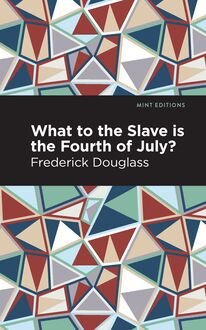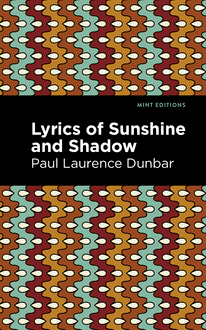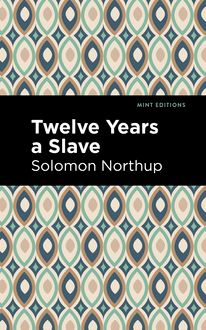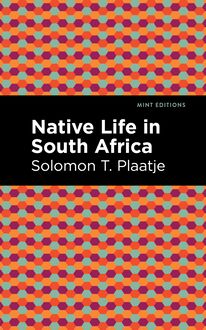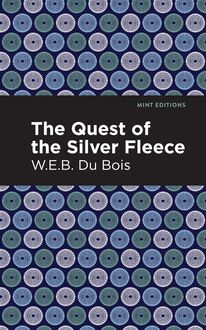-
 Univers
Univers
-
 Ebooks
Ebooks
-
 Livres audio
Livres audio
-
 Presse
Presse
-
 Podcasts
Podcasts
-
 BD
BD
-
 Documents
Documents
-
- Cours
- Révisions
- Ressources pédagogiques
- Sciences de l’éducation
- Manuels scolaires
- Langues
- Travaux de classe
- Annales de BEP
- Etudes supérieures
- Maternelle et primaire
- Fiches de lecture
- Orientation scolaire
- Méthodologie
- Corrigés de devoir
- Annales d’examens et concours
- Annales du bac
- Annales du brevet
- Rapports de stage
La lecture à portée de main
Vous pourrez modifier la taille du texte de cet ouvrage
Découvre YouScribe en t'inscrivant gratuitement
Je m'inscrisDécouvre YouScribe en t'inscrivant gratuitement
Je m'inscrisEn savoir plus
Vous pourrez modifier la taille du texte de cet ouvrage
En savoir plus

Description
A thorough account of Africa’s history and its lasting influence on Western culture told from the perspective of the disparate descendants who inherited its legacy. W.E.B. Du Bois highlights the hidden stories that connect these varied communities.
Originally published in 1915, The Negro presents an expansive analysis of the African diaspora over the course of history. W.E.B. Du Bois uses a critical eye to survey the early depictions of the continent, debunking stereotypical myths about its social structure. He addresses the generational impact of slavery as well as the capitalistic system that made it possible. It’s an honest look at the effects of white supremacy, classism and its place in modern society.
From Ethiopia and Egypt to the West Indies and Latin America, Africa’s influence is undeniable. The Negro sheds light on the ignored history of the continent and its many descendants. It’s a vital piece of literature that acknowledges and celebrates its cultural power.
With an eye-catching new cover, and professionally typeset manuscript, this edition of The Negro is both modern and readable.
Sujets
Informations
| Publié par | Mint Editions |
| Date de parution | 26 janvier 2021 |
| Nombre de lectures | 5 |
| EAN13 | 9781513276090 |
| Langue | English |
| Poids de l'ouvrage | 3 Mo |
Informations légales : prix de location à la page 0,0450€. Cette information est donnée uniquement à titre indicatif conformément à la législation en vigueur.
Extrait
The Negro
W.E.B. Du Bois
The Negro was first published in 1915.
This edition published by Mint Editions 2020.
ISBN 9781513271095 | E-ISBN 9781513276090
Published by Mint Editions ®
minteditionbooks.com
Publishing Director: Jennifer Newens
Design & Production: Rachel Lopez Metzger
Project Manager: Micaela Clark
Typesetting: Westchester Publishing Services
C ONTENTS I. A FRICA II. T HE C OMING OF B LACK M EN III. E THIOPIA AND E GYPT IV. T HE N IGER AND I SLAM V. G UINEA AND C ONGO VI. T HE G REAT L AKES AND Z YMBABWE VII. T HE W AR OF R ACES AT L AND ’ S E ND VIII. A FRICAN C ULTURE IX. T HE T RADE IN M EN X. T HE W EST I NDIES AND L ATIN A MERICA XI. T HE N EGRO IN THE U NITED S TATES XII. T HE N EGRO P ROBLEMS
I
A FRICA
“Behold!
The Sphinx is Africa. The bond
Of Silence is upon her. Old
And white with tombs, and rent and shorn;
With raiment wet with tears and torn,
And trampled on, yet all untamed.”
—M ILLER
Africa is at once the most romantic and the most tragic of continents. Its very names reveal its mystery and wide-reaching influence. It is the “Ethiopia” of the Greek, the “Kush” and “Punt” of the Egyptian, and the Arabian “Land of the Blacks.” To modern Europe it is the “Dark Continent” and “Land of Contrasts”; in literature it is the seat of the Sphinx and the lotus eaters, the home of the dwarfs, gnomes, and pixies, and the refuge of the gods; in commerce it is the slave mart and the source of ivory, ebony, rubber, gold, and diamonds. What other continent can rival in interest this Ancient of Days?
There are those, nevertheless, who would write universal history and leave out Africa. But how, asks Ratzel, can one leave out the land of Egypt and Carthage? and Frobenius declares that in future Africa must more and more be regarded as an integral part of the great movement of world history. Yet it is true that the history of Africa is unusual, and its strangeness is due in no small degree to the physical peculiarities of the continent. With three times the area of Europe it has a coast line a fifth shorter. Like Europe it is a peninsula of Asia, curving southwestward around the Indian Sea. It has few gulfs, bays, capes, or islands. Even the rivers, though large and long, are not means of communication with the outer world, because from the central high plateau they plunge in rapids and cataracts to the narrow coastlands and the sea.
The general physical contour of Africa has been likened to an inverted plate with one or more rows of mountains at the edge and a low coastal belt. In the south the central plateau is three thousand or more feet above the sea, while in the north it is a little over one thousand feet. Thus two main divisions of the continent are easily distinguished: the broad northern rectangle, reaching down as far as the Gulf of Guinea and Cape Guardafui, with seven million square miles; and the peninsula which tapers toward the south, with five million square miles.
Four great rivers and many lesser streams water the continent. The greatest is the Congo in the center, with its vast curving and endless estuaries; then the Nile, draining the cluster of the Great Lakes and flowing northward “like some grave, mighty thought, threading a dream”; the Niger in the northwest, watering the Sudan below the Sahara; and, finally, the Zambesi, with its greater Niagara in the southeast. Even these waters leave room for deserts both south and north, but the greater ones are the three million square miles of sand wastes in the north.
More than any other land, Africa lies in the tropics, with a warm, dry climate, save in the central Congo region, where rain at all seasons brings tropical luxuriance. The flora is rich but not wide in variety, including the gum acacia, ebony, several dye woods, the kola nut, and probably tobacco and millet. To these many plants have been added in historic times. The fauna is rich in mammals, and here, too, many from other continents have been widely introduced and used.
Primarily Africa is the Land of the Blacks. The world has always been familiar with black men, who represent one of the most ancient of human stocks. Of the ancient world gathered about the Mediterranean, they formed a part and were viewed with no surprise or dislike, because this world saw them come and go and play their part with other men. Was Clitus the brother-in-law of Alexander the Great less to be honored because he happened to be black? Was Terence less famous? The medieval European world, developing under the favorable physical conditions of the north temperate zone, knew the black man chiefly as a legend or occasional curiosity, but still as a fellow man—an Othello or a Prester John or an Antar.
The modern world, in contrast, knows the Negro chiefly as a bond slave in the West Indies and America. Add to this the fact that the darker races in other parts of the world have, in the last four centuries, lagged behind the flying and even feverish footsteps of Europe, and we face to-day a widespread assumption throughout the dominant world that color is a mark of inferiority.
The result is that in writing of this, one of the most ancient, persistent, and widespread stocks of mankind, one faces astounding prejudice. That which may be assumed as true of white men must be proven beyond peradventure if it relates to Negroes. One who writes of the development of the Negro race must continually insist that he is writing of a normal human stock, and that whatever it is fair to predicate of the mass of human beings may be predicated of the Negro. It is the silent refusal to do this which has led to so much false writing on Africa and of its inhabitants. Take, for instance, the answer to the apparently simple question “What is a Negro?” We find the most extraordinary confusion of thought and difference of opinion. There is a certain type in the minds of most people which, as David Livingstone said, can be found only in caricature and not in real life. When scientists have tried to find an extreme type of black, ugly, and woolly-haired Negro, they have been compelled more and more to limit his home even in Africa. At least nine-tenths of the African people do not at all conform to this type, and the typical Negro, after being denied a dwelling place in the Sudan, along the Nile, in East Central Africa, and in South Africa, was finally given a very small country between the Senegal and the Niger, and even there was found to give trace of many stocks. As Winwood Reade says, “The typical Negro is a rare variety even among Negroes.”
As a matter of fact we cannot take such extreme and largely fanciful stock as typifying that which we may fairly call the Negro race. In the case of no other race is so narrow a definition attempted. A “white” man may be of any color, size, or facial conformation and have endless variety of cranial measurement and physical characteristics. A “yellow” man is perhaps an even vaguer conception.
In fact it is generally recognized to-day that no scientific definition of race is possible. Differences, and striking differences, there are between men and groups of men, but they fade into each other so insensibly that we can only indicate the main divisions of men in broad outlines. As Von Luschan says, “The question of the number of human races has quite lost its raison d’ ê tre and has become a subject rather of philosophic speculation than of scientific research. It is of no more importance now to know how many human races there are than to know how many angels can dance on the point of a needle. Our aim now is to find out how ancient and primitive races developed from others and how races changed or evolved through migration and inter-breeding.” 1
The mulatto (using the term loosely to indicate either an intermediate type between white and black or a mingling of the two) is as typically African as the black man and cannot logically be included in the “white” race, especially when American usage includes the mulatto in the Negro race.
It is reasonable, according to fact and historic usage, to include under the word “Negro” the darker peoples of Africa characterized by a brown skin, curled or “frizzled” hair, full and sometimes everted lips, a tendency to a development of the maxillary parts of the face, and a dolichocephalic head. This type is not fixed or definite. The color varies widely; it is never black or bluish, as some say, and it becomes often light brown or yellow. The hair varies from curly to a wool-like mass, and the facial angle and cranial form show wide variation.
It is as impossible in Africa as elsewhere to fix with any certainty the limits of racial variation due to climate and the variation due to intermingling. In the past, when scientists assumed one unvarying Negro type, every variation from that type was interpreted as meaning mixture of blood. To-day we recognize a broader normal African type which, as Palgrave says, may best be studied “among the statues of the Egyptian rooms of the British Museum; the larger gentle eye, the full but not over-protruding lips, the rounded contour, and the good-natured, easy, sensuous expression. This is the genuine African model.” To this race Africa in the main and parts of Asia have belonged since prehistoric times.
The color of this variety of man, as the color of other varieties, is due to climate. Conditions of heat, cold, and moisture, working for thousands of years through the skin and other organs, have given men their differences of color. This color pigment is a protection against sunlight and consequently varies with the intensity of the sunlight. Thus in Africa we find the blackest men in the fierce sunlight of the desert, red pygmies in the forest, and yellow Bushmen on the cooler southern plateau.
Next to the color, the hair is the most distinguishing characteristic of the Negro, but the two characteristics do not vary with each other. Some of the bla
-
 Univers
Univers
-
 Ebooks
Ebooks
-
 Livres audio
Livres audio
-
 Presse
Presse
-
 Podcasts
Podcasts
-
 BD
BD
-
 Documents
Documents
-
Jeunesse
-
Littérature
-
Ressources professionnelles
-
Santé et bien-être
-
Savoirs
-
Education
-
Loisirs et hobbies
-
Art, musique et cinéma
-
Actualité et débat de société
-
Jeunesse
-
Littérature
-
Ressources professionnelles
-
Santé et bien-être
-
Savoirs
-
Education
-
Loisirs et hobbies
-
Art, musique et cinéma
-
Actualité et débat de société
-
Actualités
-
Lifestyle
-
Presse jeunesse
-
Presse professionnelle
-
Pratique
-
Presse sportive
-
Presse internationale
-
Culture & Médias
-
Action et Aventures
-
Science-fiction et Fantasy
-
Société
-
Jeunesse
-
Littérature
-
Ressources professionnelles
-
Santé et bien-être
-
Savoirs
-
Education
-
Loisirs et hobbies
-
Art, musique et cinéma
-
Actualité et débat de société
- Cours
- Révisions
- Ressources pédagogiques
- Sciences de l’éducation
- Manuels scolaires
- Langues
- Travaux de classe
- Annales de BEP
- Etudes supérieures
- Maternelle et primaire
- Fiches de lecture
- Orientation scolaire
- Méthodologie
- Corrigés de devoir
- Annales d’examens et concours
- Annales du bac
- Annales du brevet
- Rapports de stage

